Buy A New Car
2021 Subaru Forester Sport: Private Fleet Car Review.
Subaru is the little car company that does. It quietly churns away in the background, almost like extras in a television show, hoping to be recognised by the wider audience for its efforts. And so it should be. Its WRX is the stuff of legends, the Outback is a more than capable bi-linguist, speaking tarmac and soft-roading equally, and then there’s Forester. The chunky, wagon-looking, mid-sized SUV, is a perennial favourite. In late 2020 a mild facelift was given, and a new trim, Sport, was added. Priced at a breath under $46,850 driveaway, the Forester Sport is aimed at those that like their weekends to be just that little bit dirtier but with comfort.
The chunky, wagon-looking, mid-sized SUV, is a perennial favourite. In late 2020 a mild facelift was given, and a new trim, Sport, was added. Priced at a breath under $46,850 driveaway, the Forester Sport is aimed at those that like their weekends to be just that little bit dirtier but with comfort.
Power comes from Subaru’s legendary flat, or boxer, four. It’s at 2.5L in capacity, producing 136kW and 239Nm. To get those you have to see well over 4,000rpm. Drive to all four paws is courtesy of a Constant Variable Transmission, and it’s a bit old school in that it prefers the spin to around 3,500rpm and sits there as velocity increases to highway rates, rather than the now more familiar change change change. There are programmed steps and the steering column has paddle shifts to take advantage of those. Our drive cycle took in around 40% highway and we saw a creditable 7.1L/100km as our final overall figure. Outside and inside, Subaru have splashed some red-orange, on the lower sills, centre console, and air-vents. On our white example, complete with black painted 18 inch alloys, wrapped in 225/55 rubber from Bridgestone’s Dueler range, it makes for an eye-catching combination.
Outside and inside, Subaru have splashed some red-orange, on the lower sills, centre console, and air-vents. On our white example, complete with black painted 18 inch alloys, wrapped in 225/55 rubber from Bridgestone’s Dueler range, it makes for an eye-catching combination. Inside, Subaru’s fitted water repellent cloth, in varying and pleasing shades, to the seats and door trims. There are map pockets on the backs of the driver and front passenger seats. The seats are super-easy to clean and vacuum when required. The cargo section has a tough-wearing carpet top floor that lifts to expose some polystyrene that houses the jack equipment, a couple of small storage spots, and covers the full sized spare wheel. There are four cargo hooks, a 12V socket, and a tab either side to fold the rear seats easily. Capacity starts at 509L.
Inside, Subaru’s fitted water repellent cloth, in varying and pleasing shades, to the seats and door trims. There are map pockets on the backs of the driver and front passenger seats. The seats are super-easy to clean and vacuum when required. The cargo section has a tough-wearing carpet top floor that lifts to expose some polystyrene that houses the jack equipment, a couple of small storage spots, and covers the full sized spare wheel. There are four cargo hooks, a 12V socket, and a tab either side to fold the rear seats easily. Capacity starts at 509L.
 It’s also inside where the age of the platform is showing. Compared to offerings from Korea, and the brand’s Japanese competition, there are far more hard edges, more right lower side buttons for various functions, an a lack of the now seemingly mandatory stand along touchscreen. Also, no wireless charge pad for smartphones.
It’s also inside where the age of the platform is showing. Compared to offerings from Korea, and the brand’s Japanese competition, there are far more hard edges, more right lower side buttons for various functions, an a lack of the now seemingly mandatory stand along touchscreen. Also, no wireless charge pad for smartphones.
Although DAB tuner equipped, the software still isn’t as good in one small area as the competition. The data service shows the full artist and song info in other cars, Subaru’s shows only the first ten characters or so. The layout though is clean and eyeball friendly. Underneath the screen is a CD player slot, and more hard press buttons for audio, map, and more. Climate control is a touch old school, with dials rather than buttons. However, when the aircons cooling was engaged, it cooled very quickly in comparison to some.
Underneath the screen is a CD player slot, and more hard press buttons for audio, map, and more. Climate control is a touch old school, with dials rather than buttons. However, when the aircons cooling was engaged, it cooled very quickly in comparison to some.
Subaru also has a driver attention monitor and this is cleverly hidden in the top section of the binnacle that houses the info screen. Look away from the straight-ahead for a second or two and warning tone sounds, and an icon flashes up on the screen ahead of the driver. There is Subaru’s X-Mode to enjoy, and it’s operated via a dial in the centre console. It’ll switch between Mud and Gravel at the flick of a wrist and back to Normal at a press.On its last major update, the rear lights changed to a C-design, and are LED lit. These match the same shaped Daytime Running Lights in the headlight clusters. Forester has always had a no nonsense stance, and the assertive looking grille, lower air intake, and black chin insert continue that. In size the wagon design hides the 1,730mm height, which provides plenty of head space and in the Sport, has a full length glass roof. The length of 4,625mm and a wheelbase of 2,670mm put it right in the ballpark for its competition. And when getting slightly mucky, 220mm of ground clearance is there.
There is Subaru’s X-Mode to enjoy, and it’s operated via a dial in the centre console. It’ll switch between Mud and Gravel at the flick of a wrist and back to Normal at a press.On its last major update, the rear lights changed to a C-design, and are LED lit. These match the same shaped Daytime Running Lights in the headlight clusters. Forester has always had a no nonsense stance, and the assertive looking grille, lower air intake, and black chin insert continue that. In size the wagon design hides the 1,730mm height, which provides plenty of head space and in the Sport, has a full length glass roof. The length of 4,625mm and a wheelbase of 2,670mm put it right in the ballpark for its competition. And when getting slightly mucky, 220mm of ground clearance is there.
On start-up the boxer has a metallic note before settling quickly into its sonorous flat four burble. the exhaust mutes the tone and no doubt after-market specialists can help that part of the equation. the CVT, as mentioned, is a bit old school in approach and delivery, yet doesn’t unduly hold back performance. It is called Sport, after all. There’s enough urge, as a result, on acceleration, and once in its stride, the 2.5L does a suitable job of moving the Forester around.  It’s responsive to the throttle which gives it great suburban manners and on a country-style highway run, is quiet and relaxed.The suspension is beautifully setup, with damping well sorted for its own quick response, yet soft enough to waft the Sport across even mild gravelly roads without upsetting the fluidity of the chassis. On a gravel road, the X-Mode ensures a more sure footed approach and peace of mind. Subaru’s SI-Drive can also be engaged depending on the driver’s whim, and in the Sport, it’s a two-mode, not three, program, dropping the more incisive Sport Sharp.
It’s responsive to the throttle which gives it great suburban manners and on a country-style highway run, is quiet and relaxed.The suspension is beautifully setup, with damping well sorted for its own quick response, yet soft enough to waft the Sport across even mild gravelly roads without upsetting the fluidity of the chassis. On a gravel road, the X-Mode ensures a more sure footed approach and peace of mind. Subaru’s SI-Drive can also be engaged depending on the driver’s whim, and in the Sport, it’s a two-mode, not three, program, dropping the more incisive Sport Sharp.
Subaru’s safety record is virtually peerless, and their Eyesight system , with the stereoscopic cameras, have lead the way. Backed by a five year and unlimited kilometre warranty plus capped price servicing, Subaru’s Forester Sport has seven airbags including kneebag, torque vectoring, Blind Spot Monitor, Side View Monitor (with a camera fitted to the left hand side exterior mirror), Adaptive Cruise Control, Lane Keep Assist (and not as intrusive as some other brands), Lead Vehicle Start Alert, and Pre-Collision avoidance systems. At The End Of The Drive.
At The End Of The Drive.
The Forester range is popular yet, oddly, almost invisible in one respect. It’s the not the sort of vehicle one hears about from mates and family as the vehicle of choice yet when out on the road they’re apparent and in good numbers. There’s a simple and good reason for that: they’re a bloody good car. It’s verging, though, on needing an update, but for the time being is still a willing and able performer.
Car courtesy of Subaru Australia, X-Mode definition courtesy of David Bonnici at WhichCar.
Mini dumps leather – a sign of change to come?
According to an interview with Mini’s design boss, Oliver Heilmer, the beloved car brand will soon no longer be offering a leather fit-out in any of its vehicles, instead going down the route of doing away with the material and turning vegan.
His remarks cited the sustainability – or lack thereof – as part of the reason why the brand is ditching the material in its next release, despite the fact that more than half of the company’s cars sold in the UK last year featured leather interiors.
Mini will instead opt for more “sustainable” fabrics according to Heilmer, arguing “we’re totally convinced that we will have modern and high-value products without leather.”
Mini isn’t alone, nor first for that matter
The company isn’t the first to make the move to ditch leather. In 2019, Tesla was among the first to announce that it would only utilise vegan fabrics in the cabin of its Model 3 sedan and Model Y SUV.
Elsewhere, a host of other brands have used faux leather in place of the real thing, and among European manufacturers, there have been plans to incorporate recycled materials such as plastic bottles in an effort to embrace a sustainable focus.
Even in the massive American market, electric car start-up Fisker is a brand positioning itself for an eco and sustainability-oriented future. Its Ocean SUV that is currently in development is set to use a large array of recycled materials like regenerated nylon from fishing nets for the carpet, recycled polyester from t-shirts to act as eco-suede upholstery, not to mention tyre waste for various other components in the car.

What matters to the consumer?
It raises an interesting proposition for future new car buyers – how important are those ‘luxury’ touches that many of us have become accustomed to seeing? With this being the first in a potentially broad and all-encompassing effort to introduce other materials that are more sustainable that their existing counterparts, there could be some interesting changes on the horizon.
However, given pricing isn’t exactly an area that would be in line for a reduction as part of the eco push, would you buy a premium car and be content with fabric finishes or recycled materials being incorporated across the board?
More broadly, is Mini’s move the beginning of a wider shift among car manufacturers to do away with leather and opt alternative materials instead?
January 2021 Sales Figures Show Upwards Swing
Australia’s Federal Chamber of Automotive Industries has released the sales figures for January of 2021. A total of 79,666 vehicles were sold in January 2021 which is up by 11.1 per cent on January 2020. 71,731 vehicles were sold in that month. Every state and territory saw an increase, and following on from December 2020, with the Northern Territory seeing the highest increase of 38.7% to just 1.9% in Victoria. Private buyers contributed by having an increase of 25.4%. Business buyers decreased, but by only 1.3% whilst government and rental sales dropped by 11.2% and 12.4%.
Of note was that Holden as a brand registered zero sales.
The private sales had the passenger vehicle category down by 9.3% compared to January 2020, with SUVs rising by 17.4%. Light Commercial Vehicles jumped by 24.6%. Toyota lead the way in January 2021 with 16,819 vehicles (21.1%) with HiLux 3,913 of those. Mazda was 2nd overall on 8,508 with 10.7% market share. Hyundai saw 5,951 new vehicles sold for a 7.5% share and Kia on 5,500 units for 6.9%. Mitsubishi backed up with 5,179 units and took a market share of 6.5%. Ford’s Ranger was the 2nd highest seller behind the HiLux, moving 3,120 units, just ahead of the RAV4 with 3,066 whilst the LandCruiser sold 2,388 units. Mazda’s CX-5 had 2,081 units find new homes.
Ford’s Ranger was the 2nd highest seller behind the HiLux, moving 3,120 units, just ahead of the RAV4 with 3,066 whilst the LandCruiser sold 2,388 units. Mazda’s CX-5 had 2,081 units find new homes.
The FCAI chief executive, Tony Weber, said: “During the past three months sales had increased by 12.4 per cent compared to the corresponding period twelve months earlier. The January sales numbers are indicative of positive consumer confidence in the domestic economy. With attractive interest rates and a range of other economic indicators encouraging consumption, we hope to see this trend in new vehicle purchasing continue through 2021.”
Toyota was the leading brand in January with sales of 16,819 vehicles (21.1 per cent of the market), followed by Mazda with 8,508 (10.7 per cent), Hyundai with 5,951 (7.5 per cent), Kia with 5,500 (6.9 per cent) and Mitsubishi with 5,179 (6.5 per cent).
The Toyota Hilux was the best-selling vehicle in January 2021 with sales of 3,913 vehicles, followed by the Ford Ranger (3,120), the Toyota RAV4 (3,066), the Toyota Landcruiser (2,388) and the Mazda CX5 (2,081).
In the Micro Car segment, the Kia Picanto continued to dominate in a three car field. The Fiat Abarth and Mitsubishi Mirage are the other two, and sold 49 and 56 respectively, way off the 573 of the Picanto. In the light car category, Chinese owned MG scored gold with 859, outclassing the Suzuki Swift (562), Volkswagen Polo (526) and the Toyota Yaris (486). Moving to the Small Cars, and Toyota’s Corolla moved 2,062, Just clearing the revamped Hyundai i30 on 1,952. 3rd was a tight tussle, with the Kia Cerato emerging as the winner over the Mazda3, on 1,545 to 1,501.
In the light car category, Chinese owned MG scored gold with 859, outclassing the Suzuki Swift (562), Volkswagen Polo (526) and the Toyota Yaris (486). Moving to the Small Cars, and Toyota’s Corolla moved 2,062, Just clearing the revamped Hyundai i30 on 1,952. 3rd was a tight tussle, with the Kia Cerato emerging as the winner over the Mazda3, on 1,545 to 1,501.
Medium cars and sub-$60K, and Toyota’s big Camry blew the opposition away on 815. Subaru’s Liberty was 2nd on 183. Skoda and there Octavia took bronze on 153, ahead comfortably of the Mazda6 with 114.
Large cars and there’s really only one contender now, Kia’s Stinger on 147, 99 units ahead of the Skoda Superb.
People movers and Kia’s Carnival moved 442, thumping the Hyundai iMax and Honda Odyysey, both on 67. Moving into Sports Cars and the Mustang said hello to 361 new homes, well ahead of Mazda’s MX5 and Hyundai’s soon to be discontinued Veloster, on 53 and 45.
For the Light SUVs sector, Mazda’s CX-3 absolutely dominated with 1,344. Toyota’s new SUV based on the Yaris, the Yaris Cross, moved an impressive 541, just edging out the slightly older VW T-Cros on 494.
In the Small SUV sector, another close battle here and it was 25 units separating the Mitsubishi ASX (1,278) to the MG ZS (1,253). Hyundai’s run-out Kona was the only other to crack the 1,000 with 1,091. It’s been updated and available for sale from February.
RAV4 and Mazda CX-5 duked it out for the Medium SUV segment, with 3,066 to 2,081. 4rd was Nissan’s X-Trail on 1,593, clear of Hyundai’s Tucson on 1,206. Go large and it was Toyota’s Prado on 1,259, ahead of Kia’s recently updated Sorento on 745. Mazda’s in-betweener, the CX-8, saw 571, tying with Hyundai’s Santa Fe. In the upper large, Toyota’s LandCruiser outclassed its opponent, Nissan’s Patrol, with 1,499 to 241.
Inside the ute/pick-up segment, the HiLux in both 4×2 and 4×4 continued its dominance. In two wheel drive guise it more than doubled the Isuzu D-Max, with 823 to 406. Ford’s Ranger was 3rd on 318. In the 4WD sector it was 3,090 to Ranger’s 2,802. In 3rd was Mitsubishi’s Triton, edging the D-Max on 1,416.
Petrol is still the clear winner in preferred fuels, with just 32 PHEVs, 78 EVs, and 1,915 Hybrids moving in the Passenger segment. In the SUVs, 30,062 petrols moved in comparison to diesel with 7,811, PHEV on 126, EV on 213, and Hybrids at 3,332.
On a country of manufacturing basis, Japan was the leader at 29,275, with Korea on 11,516. Thailand and their ute/pickup manufacturing shone at 16,903, and Chinese made vehicles rose to 4,198. This puts the brands sold from Chinese manufacturing into 4th overall.
New Reasonably-Priced Cars (Commodore/Falcon Replacements)
By now you’ve probably recovered from the loss of not being able to purchase a new Falcon or Commodore in Australia. These were lovely, big, spacious cars that could travel long distances in superb comfort. So what other alternatives are there for the buyer looking for a new car with those ‘good-ol’ Commodore and Falcon traits? Well, the good news is there are some potential new vehicles for you.
I’ve had a look at some of the roomier cars with decent performance, decent comfort and reasonable pricing; and when I mean reasonable pricing I mean anywhere up to $60k. There are one-or-two vehicles on the list that are priced beyond the $60k mark, but I’ve added them because I reckon that they would still be worth considering for those of you who have a few more dollars in your back pocket. None on the list run out to much beyond $80k.
The pricing given for each vehicle should be regarded as the estimated standard model price, so if you go for the higher-end models or want more options, then you would expect that these variants will be pricier. Don’t forget to get in touch with our sales team at Private Fleet because often we can get you some great deals!

Alfa Romeo Giulia ($60,900)
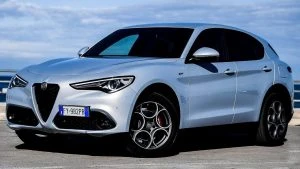
Alfa Romeo Stelvio ($65,900)
Alfa Romeo might just have a car that fixes your Commodore or Falcon withdrawal symptoms. The Giulia is a really nice drive, is quick and gets five-star safety. The Stelvio is the SUV version that’s superbly nice-looking and great to drive. These two Alfas tick all the right boxes for those who are after a great driving experience and something a bit special.

Audi A5 ($71,900)

Audi A6 ($84,900)

Audi Q5 ($66,900)
Three Audis come to mind – all of which are impeccably built, comfortable and high-tech.

BMW 3 Series ($70,900)

BMW 4 Series Coupe ($71,900)
These two Beemers are worth a look. Any of the line-up are dynamic and efficient cars to drive. They’ve just been updated with all the latest new technology. The sexiest car in this list might be the 2021 4-Series Coupe.

Chrysler 300 ($59,950)
Do try one of these! Superbly comfortable and roomy, the 2021 Chrysler 300 is loaded with luxury and style. There is heaps of smooth engine torque and plenty of performance available with the 300. A Chrysler 300 comes with the choice of a V6 or V8 petrol engine, and the pricing is outstanding, too.
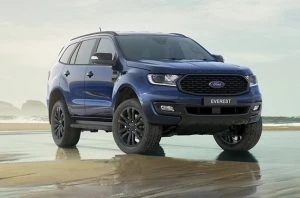
Ford Everest ($50,090)

Ford Mustang ($51,590)

Ford Ranger ($29,190)
Three Fords might do it for you. The Mustang has loads of performance available, but it is a bit tight on rear seat space. The Ranger is a comfortable ute that doubles as a workhorse. The Everest is an SUV Ranger, and is lovely to drive long distance with the family and gear on-board. The Ranger and Everest boast five-star safety, 4×4 capability and come with all the latest technology.
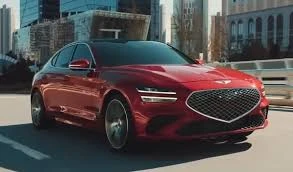
Genesis G70 ($59,300)

Genesis G80 ($68,900)
Here are two very underrated cars, or perhaps just not so well known. The G70 and G80 are smooth, luxury cars built by Hyundai, and come with gobs of style, refinement and high-tech features. They are also superb at covering long distances quickly. Nice lookers, too!

Haval H9 ($40,990)
Thought I’d throw the new Haval H9 into the mix. It’s a stylish, spacious, big SUV that’s loaded, safe and comfortable to drive. Check out the price!

Honda Accord ($51,990)
Honda might be able to tempt you into the fold with their new Accord. There are few spacious FWD sedans that can do everything as nicely as an Accord. Comfort, new technology, new features and reliability go hand-in-hand at Honda.
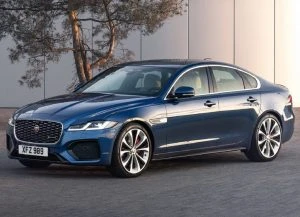
Jaguar XE ($65,670)
It might be a bit small for some, but the Jaguar XE is a pleasant drive.

Jeep Grand Cherokee ($59,950)
Ride high in a well-priced Jeep that can head off-road, is big on space and can cosset you in luxury.
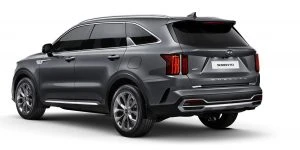
Kia Sorento ($45,850)

Kia Stinger ($49,550)
Kia has these two models that are as different from each other as chalk and cheese. However, they are roomy, good performers and are packed with up-to-date features as standard. The pricing is excellent, and the Stinger goes like a stabbed rat!

Land Rover Discovery Sport ($65,700)
This new Landie might be the right option for you. 4×4 capability, loaded with kit and stylish.

Lexus ES 300h ($62,525)
Lexus GS 300 ($74,838)
Lexus IS 300 ($61,500)
Lexus IS 300h ($64,500)
Lexus IS 350 ($66,500)
Lexus NX 300 ($57,500)
Lexus NX 300h ($60,500)

Lexus RC 300 ($67,990)
Lexus RC 350 ($70,736)
I can count nine Lexus vehicles which might be the right fit for you. Each variant is different, so there is a high chance that one of these will meet your requirements. Lexus vehicles are high-end Toyotas with excellent reliability, performance, luxury and style. Five-star safety comes with each of these machines, while the RC is a quick performer. Hybrid versions are extremely efficient. The NX is an SUV-type vehicle.
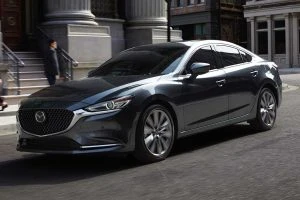
Mazda 6 ($34,490)
Mazda BT-50 ($36,550)
Mazda CX-8 ($39,910)

Mazda CX-9 ($45,990)
Aussie people seem to like Mazdas, and one of these four versions might appeal to you. Mazda vehicles are well-priced, safe, comfortable and reliable performers. The CX-9 is very roomy, and the 6 comes with sedan and wagon variants.
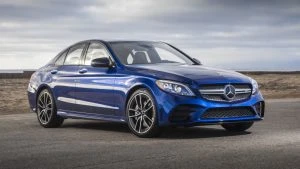
Mercedes-Benz C-Class ($66,300)
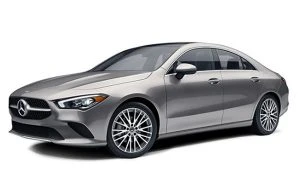
Mercedes-Benz CLA ($62,600)
Owning a new Merc doesn’t come cheap, so I’ve added just the C-Class and CLA as an alternative. These 2 classy cars are excellent to drive, comfortable and safe. They might be a bit small, however.
Mitsubishi Pajero ($54,490)

Mitsubishi Pajero Sport ($46,990)
Don’t forget the Pajero! The latest version is very good at touring long distances, great for towing, spacious and a 4×4 king. All the latest technology is on-board one of these. Again, the pricing is first-rate.

Nissan Pathfinder ($44,240)
Check out the classy new Nissan Pathfinder. It has plenty of space for the family, has five-star safety and it rides nicely on and off the road.

Peugeot 508 ($57,490)
Peugeot 5008 ($51,990)
Two classy Peugeot variants are well worth a look. The new 508 and 5008 are very stylish and safe, and they are possibly some of the nicest cars to look at on this short list (that’s quite long). Seating is spacious and comfortable, and the technology and features are all up-to-the-minute. They cover the ground effortlessly and efficiently, and they are priced very well for what they offer.
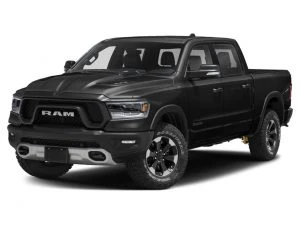
RAM 1500 ($79,950)
I thought I’d add the highly rated RAM 1500. “NZ Four Wheel Drive” magazine has classed this as the best ute for 2021. 4×4 action is a breeze in one of these tough yet comfortable machines, and space is abundant inside the cabin and out on the deck.
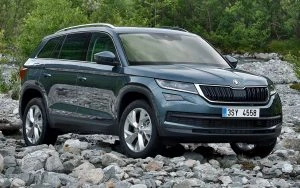
Skoda Kodiaq ($46,390)
The Kodiaq is one of the most practical vehicles you can buy. Off-road ability, space and comfort are all part of the Kodiaq’s repertoire. It also boasts one of the biggest boots.
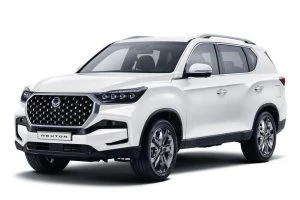
Ssangyong Rexton ($39,990)
Ssangyong’s are tough, reliable and practical. The Rexton is the latest SUV 4×4 variant that has all the latest new technology, comfort and space you’ll need. Pricing is excellent and the styling looks pretty good, especially with big alloys and fat rubber.

Subaru Levorg ($37,240)
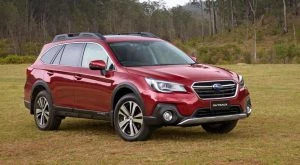
Subaru Outback 3.6R.
Subaru Outback ($37,440)
How about the Levorg or Outback wagons? Safety, AWD, reliability and practicality are all found inside one of these. There are also some quick versions of these, as well.
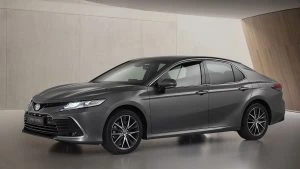
Toyota Camry ($28,990)
This is one of the cheapest cars on the list that starts out at under $30k. A new Camry is very modern, practical, efficient, safe and reliable. What more could you want?
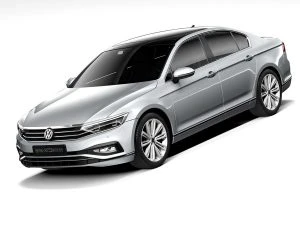
Volkswagen Passat ($46,590)
VW has the Passat. Essentially it’s the European version of the Toyota Camry. These are nice to drive, a bit more luxurious and great on style. Here is a good practical car.

Volvo S60 ($55,990)
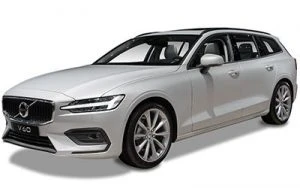
Volvo V60 ($57,990)

Volvo XC60 ($64,990)
Three Volvos slot into the price bracket range that I’ve been looking for – each a bit different from the other – but all built on Volvo’s latest 60 platform. They are very modern, very stylish, very comfortable and very safe. The Volvo XC60 has AWD and some handy off-road ability, while the V60 is a classy wagon. The S60 is the sedan version. Performance models come with hybrid technology, and all are great long-distance tourers.